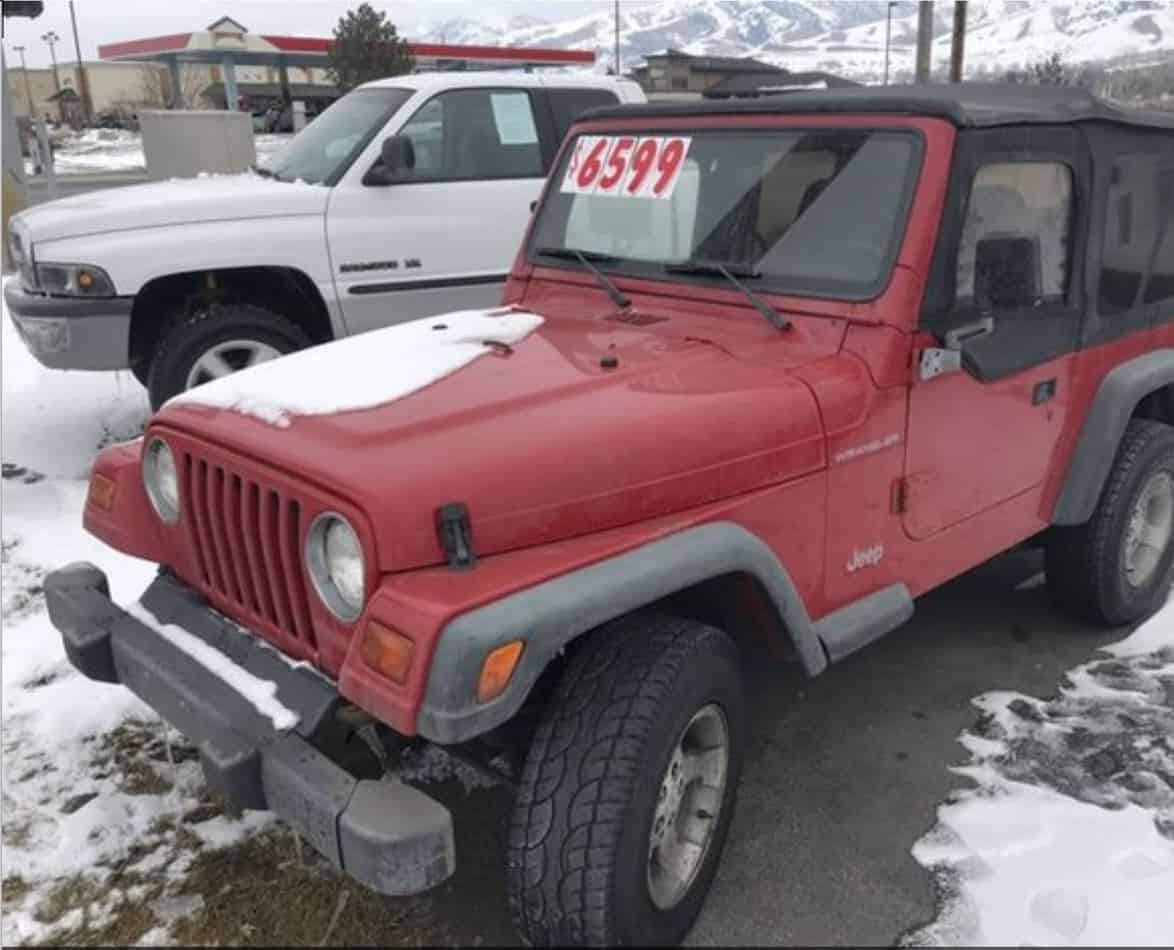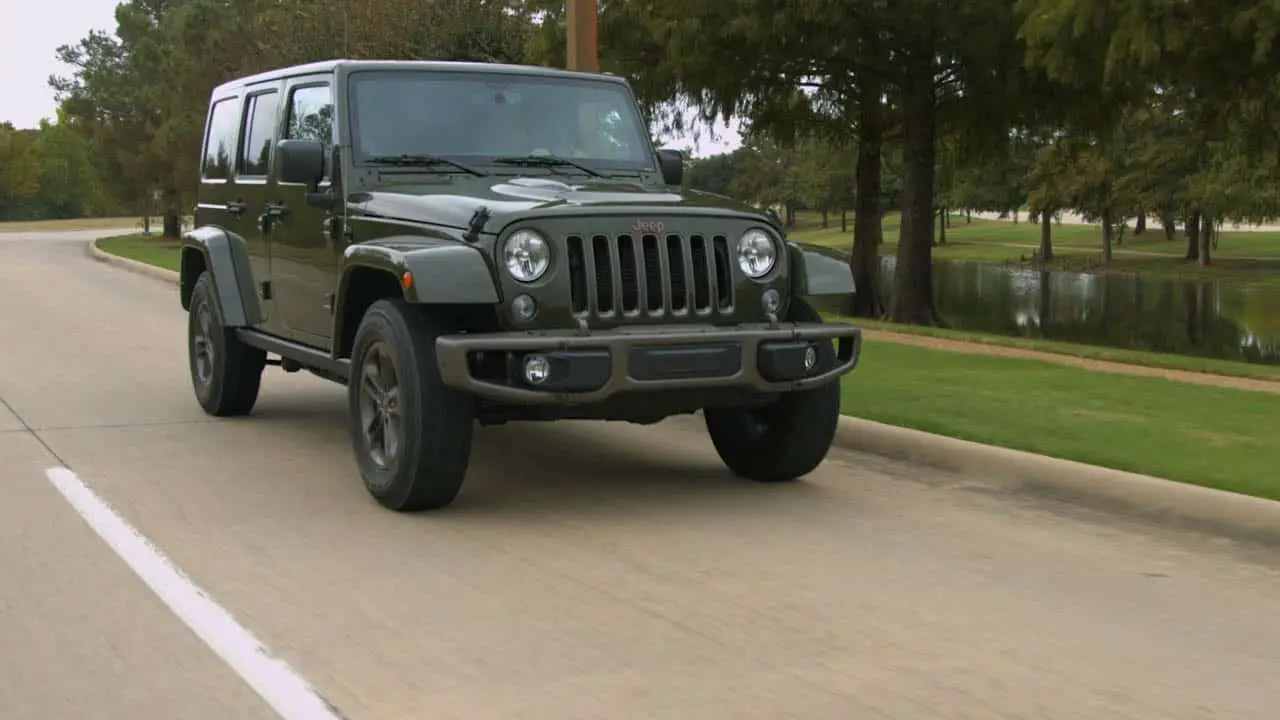Buying any used car can be a bit stressful no one wants to buy a lemon or get stuck with massive repair bills right after they just spent thousands on a new car. Now add on top of that the complexities involved in picking up a vehicle like a Jeep Wrangler which may have never left the pavement or has been wheeled like someone stole it for the past three years and you have a whole lot to think about when picking one out. So what kind of things should you look for?

Inspect The Undercarriage

All to often the first thing people think about is what is under the hood. However who cares how many miles it has or if it is burning a bunch of oil (not a good sign) if the undercarriage is rotting out with rust pockets. Motors can be replaced, transmissions rebuilt but few people have the money or time to do a frame restoration. Because Jeep Wranglers are excellent in the snow are very popular vehicles in the North East, Mountain West and North East which means a good portion of their life on the road has been spent traversing slush covered salt packed roads that can do serious damage to the undercarriage. Wear a pair of clothes you do not mind getting a bit dirty and get down on the ground and take a look at things. See if the frame has any serious rust, where the metal is completely eaten through or is very close. Pay special attention to the exhaust as well, they tend to catch a lot of moisture and may have holes that can lead to emissions issues. If the exhaust is damaged just make it part of the negotiations to get fixed before purchasing.

While underneath take a look at the skid plates. Most Jeep Wrangler models are fit with at least a few skid plates. Take a look to see if they have been crunched, ripped or damaged any in anyway. Seeing a skid plate with scratches is not a bad thing… it means it is actually doing its job. But it can help you know how the vehicle was used. We have seen dozens of craigslist ads stating “never been off-road” when a quick look at the rock sliders and skid plates tell a different story. Jeeps were built to be wheeled… so like we mentioned scrapes on a skid plate are not a big deal, unless the owner is being dishonest about the way the vehicle has been used. As soon as you can tell someone is not being honest with you move along because who knows what else they are not being upfront about. While underneath look for any signs of body work, fresh paint, completely new parts like drive shafts or other components that might indicate a rig that has been wheeled really hard and may be more worn out than you think.
Under The Hood
Once you have taken a look to make sure she has good “bones” it’s time to jump under the hood and take a look under the hood. If you are buying from a private party use this time to ask about regular maintenance. Ask them to grab or show you any records they have. You want to make sure this vehicle is being serviced regularly. Check the air filter, oil level and coolant levels to see if they are being topped off. Low coolant is a clear sign someone is either taking short cuts when maintaining the vehicle or doing the work themselves and not topping off fluids as most quick service stations top off fluids during a oil change visit. If you are looking at a Jeep with the 3.8 liter engine ask them about oil consumption. These engines are prone to burning oils, some owners reporting up to a quart per gas tank in severe cases.

Check for leaks. Look under the Jeep to see if anything is leaking. It is not uncommon for a Jeep to have a slight engine oil or engine coolant leak. If things look pretty dry fire the Jeep up and let it get warm, move it to a dry clear patch of ground and then turn it off. Start looking for leaks from seals and hoses and make sure no oil is leaking from the oil drain pan.
The Test Drive
Now that things look good it’s time to jump in and take this Jeep for a test drive. We always recommend testing a few different vehicles so you have a good idea of what “normal is” if you are looking at a fairly new model consider taking a brand new model out for a test drive as well so you can know what the rig should drive like. Pay special attention to a few things.
1. Acceleration: Jeep Wranglers have never been known for their speed, but putting the pedal to floor can help you test a few things. How does the transmission shift under high RPMs? Does this vehicle accelerate and shift at the same time as the other vehicles you have tested. This will help you find outliers. If it shifts harder than the other Jeeps you have tested their may be an issue with the transmission.

2. Hard Braking: In a safe place perhaps an empty parking lot give the brakes a good hard stop. You do not need to lock up the tires and burn rubber but you want to see how the vehicle handles under hard braking. Does it pull hard in a direction when you hit the brakes? That can mean the rotors may need some work, or could even indicate issues with suspension. Do the brakes squeak or make grinding noises when in use?
Test All Performance Features
One thing that is often overlooked when going for a test drive is the performance features. Find a gravel or dirt road where you can make sure that the 4 wheel drive and 4 low work. Shift the Jeep into 4 high and make sure it quickly engages and disengages. If you are looking at a Jeep equipped with lockers test those as well to make sure they are working properly. If you have never used the factory equipped lockers consult the owners manual to make sure you are following the proper procedures when testing them. It’s not a bad idea to ask the owner to walk you through the process either if you are buying from a private party.
Test All Interior Features
In addition to checking all of the performance features of the vehicle you want to check and make sure all of the interior features work as well. Turn on the radio and check all of the infotainment features. If equipped check the power and heated seats to make sure they are working. Check all windows, lights, wiper blades and other features. Spend some time making sure that all of the interior lights and back-lights all work, and all buttons work and do not stick.

Modifications
One of the best things about owning a Jeep is the massive selection of aftermarket parts and accessories. This can be a good thing and a bad thing when looking at a used Jeep. Depending on the quality of the products, professional level of the install and how much the current owner believes those updates are worth buying a Jeep with some aftermarket accessories can actually be a bargain. However you want to spend a lot of time inspecting all aftermarket additions. Check to look at the quality of the installations and workmanship. Pay special attention to any products that require metal, cutting or welding. Make sure the welds are nicely done.
Ask about who did the installations, and ask for any paperwork if possible. This can be handy if you ever run into any issues down the line and need someone to sure up an installation they did on the vehicle before you owned it.

Test things like aftermarket lockers, winch, and aftermarket lights to make sure that everything works. Often overlooked is making sure that the winch is still equipped with the controller, it is not uncommon to look past the controller and then realize you cannot utilize the winch when needed even thought it works.
The Devil is In The Details
Pay special attention to any suspension modifications. Adding a lift or modding the suspension is one of the most common aftermarket additions and it’s not uncommon for Jeep enthusiasts to do the suspension upgrade on their own. That’s not necessarily a bad thing, but make sure you take a look at all the fittings, bolts, bushings, control arms and ball joints. This is an area that you cannot spend enough time, inspecting and testing to make sure things are done right. When special care is taken on the details when it comes to suspension and other aftermarket accessories you know the right things are being done under the hood as well.
Last But Not Least
Take a nice long look at the tires to make sure they are wearing properly. Tires that are wearing improperly can be a good indicator of issues with the suspension or neglect when it comes to preventative maintenance. Additionally because tires are wear items and very expensive it’s important to consider their wear and lifespan when considering pricing. Tires that will need to be replaced soon after purchase should lower the purchase price on the rig.
Share The Wealth
Are you a pro at buying used Jeeps? Share your tips with us in the comments and we will add your insights to the article! What type of things do you look for when evaluating a used Jeep?
